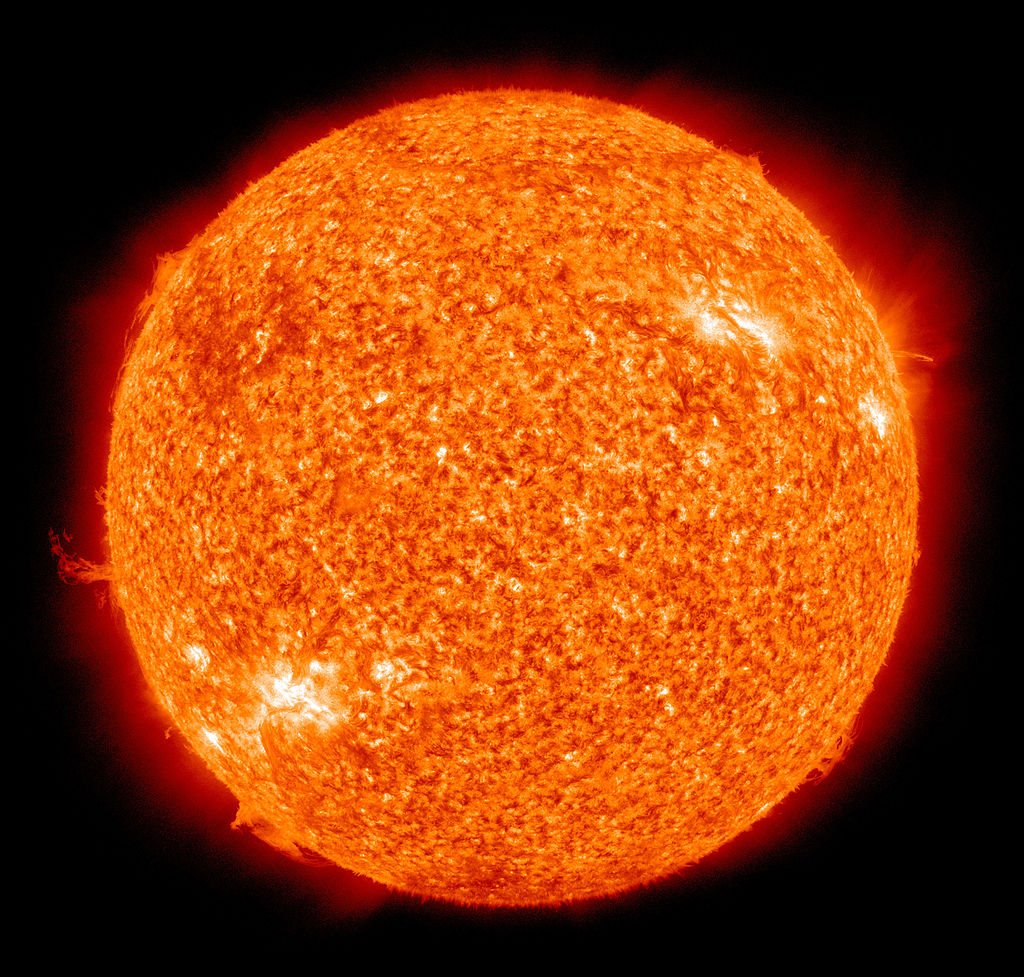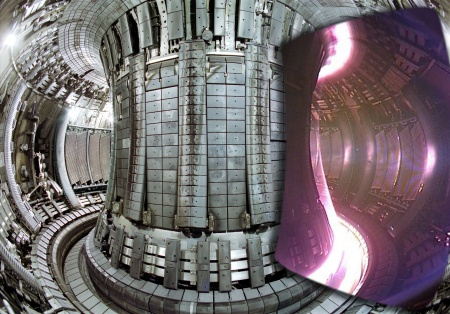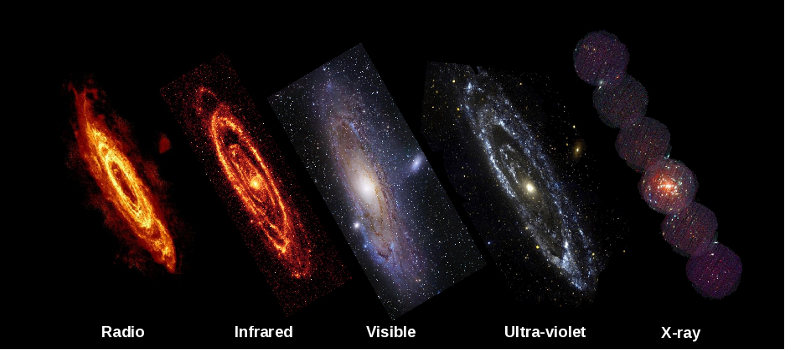Section 1.1: Why does the Sun shine?
Sun
The Sun is a star and, like all stars, uses nuclear fusion to release energy in order to "shine". Fusion is the process of bringing two very small particles together and joining them together to produce a different kind of particle (for the Sun, these are mostly hydrogen nuclei, ie protons). The new particle has a lower energy than the original two combined, and that difference in energy is released which heats the star. The energy is related to the mass of the particles through Einstein's famous equation E = mc2, where E = energy, m = mass and c = the speed of light.

False-colour image of the Sun showing its turbulent surface (credit: NASA-SDO)
However, it is very difficult to bring the two particles together, as they have the same charge and repel each other. You need to put in enough energy to force them to come together for nuclear fusion to occur.
For a light-hearted view of how fusion occurs, take a look at the video for a They Might Be Giants song 'The Sun is a mass of incandescent gas'.
ACTIVITY: Have a go at these simulations to see how temperature, volume and density affect fusion.
ACTIVITY: For more information about the Sun and fusion, take a look at the SunTrek project.
In the UK, Culham Centre for Fusion Energy researches the process of fusion to replicate it on Earth. Fusion is a potential energy source for the future which would be clean and carbon-free. They use special vessels that can take high pressures to create a plasma for the process to occur.

Split image showing an interior view of the JET vacuum vessel, with a superimposed image of an actual JET plasma taken with a visible light camera. Only the cold edges of the plasma can be seen, since the centre is so hot that it radiates only in the ultra-violet part of the spectrum. © EFDA-JET
ACTIVITY: Learn more about what the researchers at Culham do:
The activity on the Sun is not consistent and sometimes more energy and particles are given out in a solar flare or coronal ejections. This affects what is going on in the space around it and is known as space weather. Space weather is important for astronauts and satellites in space but also for us on Earth. Big changes in space weather can affect our atmosphere, sometimes causing greater than usual Aurora.
RESEARCH:
NASA's Solar Dynamics Observatory (SDO) was launched in 2010 to study the solar flares and coronal ejections that cause space weather.
ACTIVITY: Take a look at some of the data that the SDO has sent down in this video.
We will look at stars in more detail in section 2.

